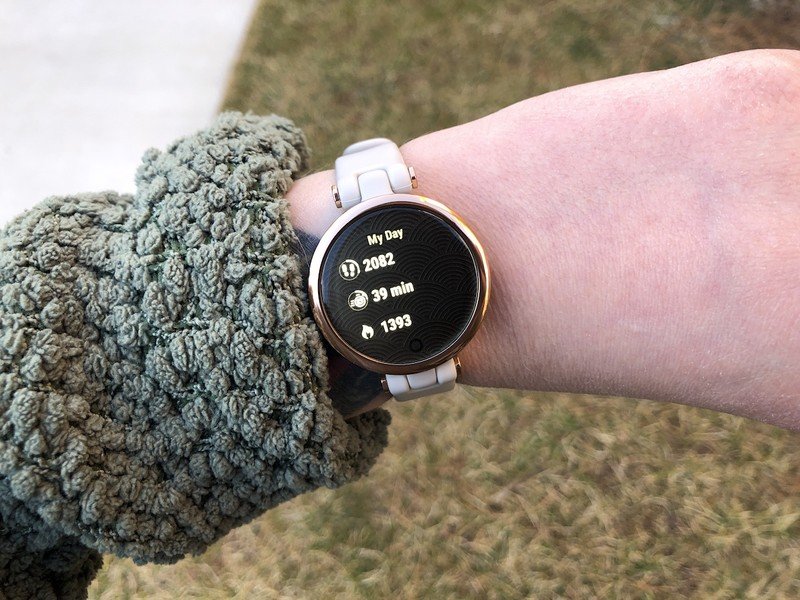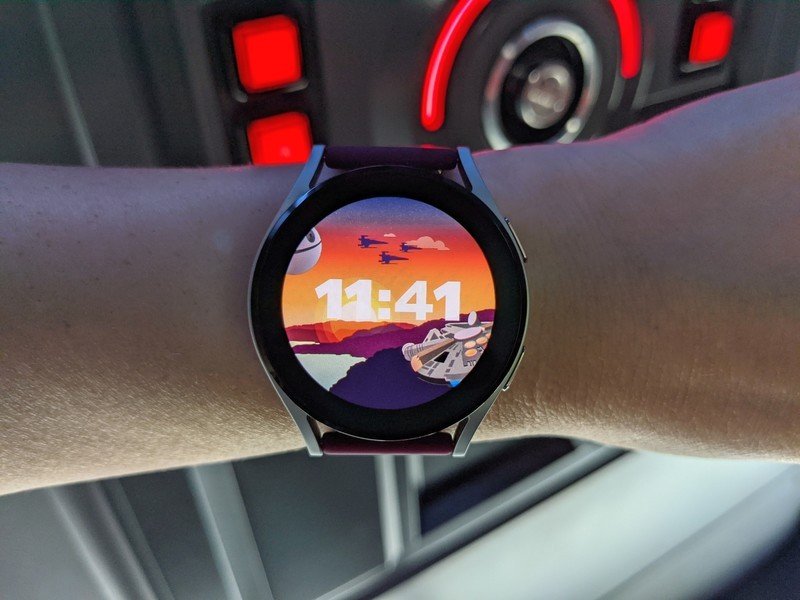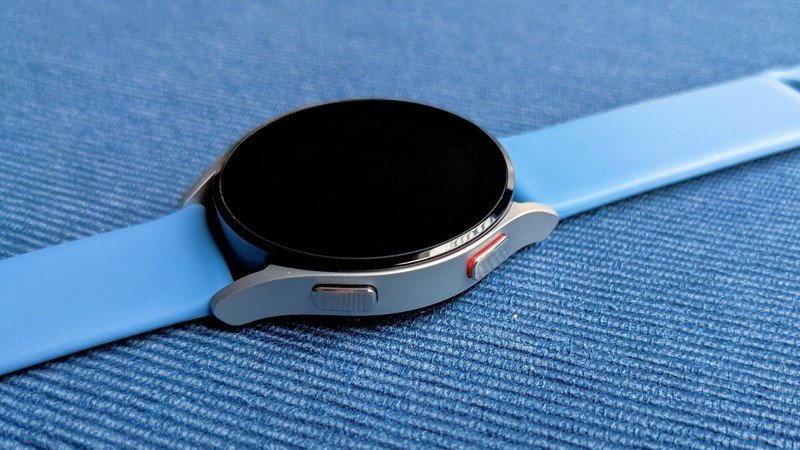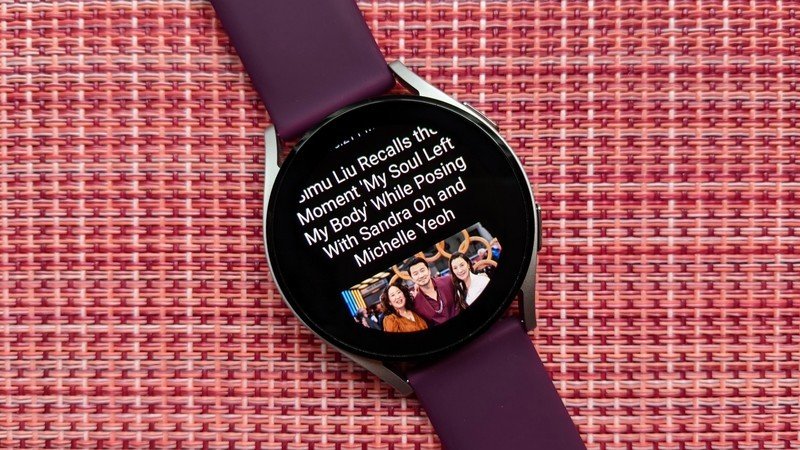Smartwatches for women are still a major letdown

Between the fitness tracking more and more of us rely on and their ability to triage and interact with notifications without having to pull out our phones every 90 seconds, Android smartwatches have evolved from a luxury to an essential need these days. Mine controls my music, reminds me of calls and notifications when I forget my phone in the other room, manages my timers, tracks my heart rate, gets me to take breaks when I get tunnel-vision, and even lets me pay without having to get my wallet or phone out of my holster.
In short, it's just as much a lifeline as my phone. Which makes it all the more painful when I find myself still having to make sacrifices and compromises to find one that only kind of fits.
At the beginning of the month, we saw shiny new smartwatches from Razer and Fossil including the new Skagen's 41mm Falster Gen 6, which Fossil touted for having the same features and screen size as its larger 44mm Fossil Gen 6 models. While a bigger screen in a smaller device is always something I applaud, it felt hollow because 41mm is still too large for my wrist and millions of others.

2022 looks to be a very interesting year for wearables as more Wear 4100+ watches take the field, older models get Wear OS 3, and we maybe, just maybe might finally get a real, physical, buyable Pixel Watch. For everything on the horizon, however, there is still painfully little in the smartwatch space that actually fits and looks good on a daintier arm.
Smartwatches may have come a long way in three years, but they have miles to go before they fit smaller wrists comfortably. And even worse, very little effort seems to be going into fixing this issue in any meaningful way.
Smartwatches for women A brief history

The first Android Wear watch, the original Moto 360, was definitely not dainty or petite, but I wore mine with pride. Even though it dug into the back of my hand whenever I rotated my hand back to push on a door or lean over a table, I endured it with a smile so I could control my music from my wrist and peek at notifications while directing newscasts or doing chores. After all, the 360 fit better than the Samsung Galaxy Gear Live or LG G Watch with their 1.65-inch screens and even larger casings.

The next Android smartwatch that reasonably fit smaller wrists was the Huawei Watch, which was not only the best Android watch of 2015 but ruled the segment clear until 2018. The 1.3-inch, perfectly round screen had wonderfully slim bezels and the lugs were short, meaning that even on narrow wrists like mine, it almost felt — and better yet, looked — like a normal smartwatch, if a really, really thick one. I almost cried when I had to send mine back to Huawei, because nothing else on the market at the time compared.
Be an expert in 5 minutes
Get the latest news from Android Central, your trusted companion in the world of Android
2017 came along with a smartwatch that was wonderfully small and wonderfully light in the LG Watch Style, one of the first Wear 2.0 watches and just 11mm thick with a wonderfully compact 1.2-inch screen and 42mm casing. I bought the LG Watch Style with my own money because having a small smartwatch sounded like a dream come true. And it fit great — because it took out all the good stuff.

While 2017 exploded with feature-packed fitness trackers, the Watch Style lacked a heart-rate sensor and onboard GPS, so it could only do step-tracking when disconnected from your phone. It also lacked NFC, so you couldn't use it with Google Pay, one of the bigger features in Wear 2.0 and the second-biggest reason I wanted a watch after music controls. Of course, not having NFC or GPS removed bulky sensors and meant there were fewer things eating the battery. And that little 240mAh battery needed all the help it could get.
2019 brought tech-minded women a couple of options, each with its own compromise. Mobvoi finally gave us watches that weren't behemoths, but the TicWatch E was still a considerable size and its plastic housings felt and looked cheap. On the other hand, the Samsung Galaxy Watch Active and Watch Active 2 arriving in the spring and fall of 2019 gave us a wonderfully light and petit watch with only one real caveat: Tizen.



Source: Ara Wagoner / Android Central
Tizen meant app support — and to an extent, notification support — on the Galaxy Watch Active was lackluster, but it had NFC tap-to-pay (through Samsung Pay), HR tracking, and GPS so that you could leave the phone at home or your locker while you went about your workouts. It even had better battery life than its Android cousins, lasting 1.5-2 days on a charge. But the watch did less when used with a non-Samsung phone, and the notification handling is atrocious compared to the Wear OS. But it was small, it used a standard, easy-to-swap band size, and it only weighed 37 grams at a time most other watches ranged from 50g and 70g.
You can still technically buy the Galaxy Watch Active 2 today, but you shouldn't because it stops getting updates in eight months.
Today's smartwatch options for women

2020 brought us some minor refinements, but 2021 and today's lineup present a few options depending on your priorities. If you desire a small, lightweight, and beautiful watch above all else, the Garmin Lily achieved the ideal size and form factor for a smartwatch. However, it did so following the LG Watch Style playbook: no onboard GPS, no NFC, no app support, and a crystal monochromatic screen rather than color AMOLED.
The monochromatic screen actually looks quite tasteful, especially on the Dark Purple colorway, but because Garmin uses its proprietary band system rather than standard lugs, you can't customize it as much or as easily. The battery lasts five days on a single charge — because, at heart, it doesn't do any more than a fitness tracker does.


Source: Ara Wagoner / Android Central
After two years of the sublimely-sized Galaxy Watch Active Series, I held high hopes that a Galaxy Watch Active with Wear OS could be the best of all worlds, melding a smaller form factor with superior apps — and superior notification layout. What we got instead was the first Wear OS 3 watch, the Galaxy Watch 4, which gave us Google services with sleek Samsung hardware — but it's incomplete.
Google Assistant on previous Wear watches has been hit or miss, but six months on, it still isn't even an option on the Galaxy Watch 4. Battery life is back down to a single day (if that), too, and while the Watch 4 itself is a hair smaller than the Watch Active in both width and depth, the out-of-box experience for women and narrow-wristed is exceedingly awkward.
Awesome tech YouTuber Thao Huynh perfectly demonstrates the problem in the first minute of her review. The gapless design of the first-party Watch 4 straps keeps the watchband from fully rotating like straight-edge bands from the Watch Active. This leads to gaps around the front of the watch and the potential for bad reads when tracking heart rate, blood oxygen, BMI, and blood pressure, as well as just making the watch uncomfortable to wear. This leaves small-wristed users rushing out to buy better fitting replacement bands.
The Galaxy Watch 4 is still the best of the 40mm Android smartwatches available today, though. Garmin's Vivoactive 4 is twice the weight with half the app support and an underwhelming screen. Both Mobvoi and Fossil Group haven't really gotten down into the 40mm size range, and the Amazfit GTS 2 mini has the same flaw as the Garmin Lily: no apps, no NFC, and it's more a fitness watch than a smartwatch.
What we're still waiting on

Even as good as the Galaxy Watch 4 is, it's still not enough for millions of women, who flock to less full-featured fitness trackers because they balk at the "bulk" of it. Even my mother opted for the Fitbit Luxe rather than upgrading to a Galaxy Watch 4 as my father and twin did. She just thought it was way too big on her wrist, and she's not wrong.
The problem we've been running into over the last five years is the same problem we bemoaned back with the LG Watch Style: manufacturers don't see a way to reduce bulk enough for a small, lightweight smartwatch without sacrificing features. A Samsung spokesperson highlighted the design achievements made to reduce the thinness of the Watch 4 while still preserving function.
To accomplish this, Samsung reduced the size of the health sensors to create a thinner and slimmer design. While smaller sensors typically lessen the accuracy of health measurements, Samsung developed an entirely new algorithm to ensure there weren't any compromises.

Going any smaller than a 40mm screen is more than a component miniaturization issue, though: it's also a usability tradeoff. Or at least that's Fossil's problem when it comes to making watches any smaller. After the launch of the Skagen Falster Gen 6, I spoke to Fossil Group concerning smartwatch sizes and their challenges.
One challenge smartwatches face when going smaller pertains to the touchscreen, as it can be very challenging to swipe navigate a touchscreen when it gets much smaller. We have found that a 1.19" - 1.2" round display and touch area is about the smallest acceptable size that is still usable as a touchscreen. That sets one part of the minimum size from a UI/UX, and then certain elements are built out from there to support the board for the display, antennas and case design. As some of those elements see technical advancements in the coming years, we could see overall dimensions drop slightly. With the current state of the art technology, though, this is why the smallest watches with these displays at around 39-40mm diameters along with very simple designs.
If you need any proof of the problems here, just try using touchscreen fitness bands with a small display. It's an exercise in madness: you swipe or tap multiple times, hoping that at least one of them works. Even bringing up rotating bezels and physical/digital crowns as a means to help with the swiping and scrolling, there's not enough utility there to truly help the situation.

Shrinking screens also makes text readability worse, another issue that widely plagues fitness trackers. While shrinking the UI and text to fit more on-screen could work for some users, it also makes touch targets smaller and thus increases missed taps/swipes, not to mention forces you to scroll more. We need inventive solutions to this issue before smartwatches can get much smaller.
That said, just getting smaller isn't enough; we need watches designed to more comfortably fit on narrower, daintier arms. Our fitness watch fanatic Courtney Lynch doesn't have the same size qualms that most of us do, but comfort is still key.
It's more about comfort. Some are big and clunky and some are larger in size but still comfortable to wear. The Fitbit Luxe is great (you can read my editorial on it)! Right now, I'm wearing the Charge 5 and the size is perfect. I do have very small wrists and have never had an issue with size.

The models she mentioned are fitness trackers (except for the Sense), but she's one of the millions who've opted for a fitness watch over a full-fledged smartwatch in the name of comfort. Android Central's Christine Persaud was lured into making the switch with the Fitbit Luxe and its fashion-forward (but still durable) flair.
However, women and narrow-wristed men — yes, gents, I'm aware a number of you have the exact same size issues we do — simply shouldn't have to make that choice to have a well-rounded wearable experience, especially when companies like Google, Fitbit, and Garmin are already falling behind the smartwatch curve Samsung and Apple are cutting.

You deserve a smartwatch that fits your wrist as perfectly as your lifestyle. You deserve watches that sit flat and secure against your wrists so that your heart rate and blood oxygen readings aren't flaky and inaccurate. You deserve to have it all, and I think it's high time someone actually delivered on their promises of a girl-friendly watch that isn't a second-class experience.
Ara Wagoner was a staff writer at Android Central. She themes phones and pokes YouTube Music with a stick. When she's not writing about cases, Chromebooks, or customization, she's wandering around Walt Disney World. If you see her without headphones, RUN. You can follow her on Twitter at @arawagco.

